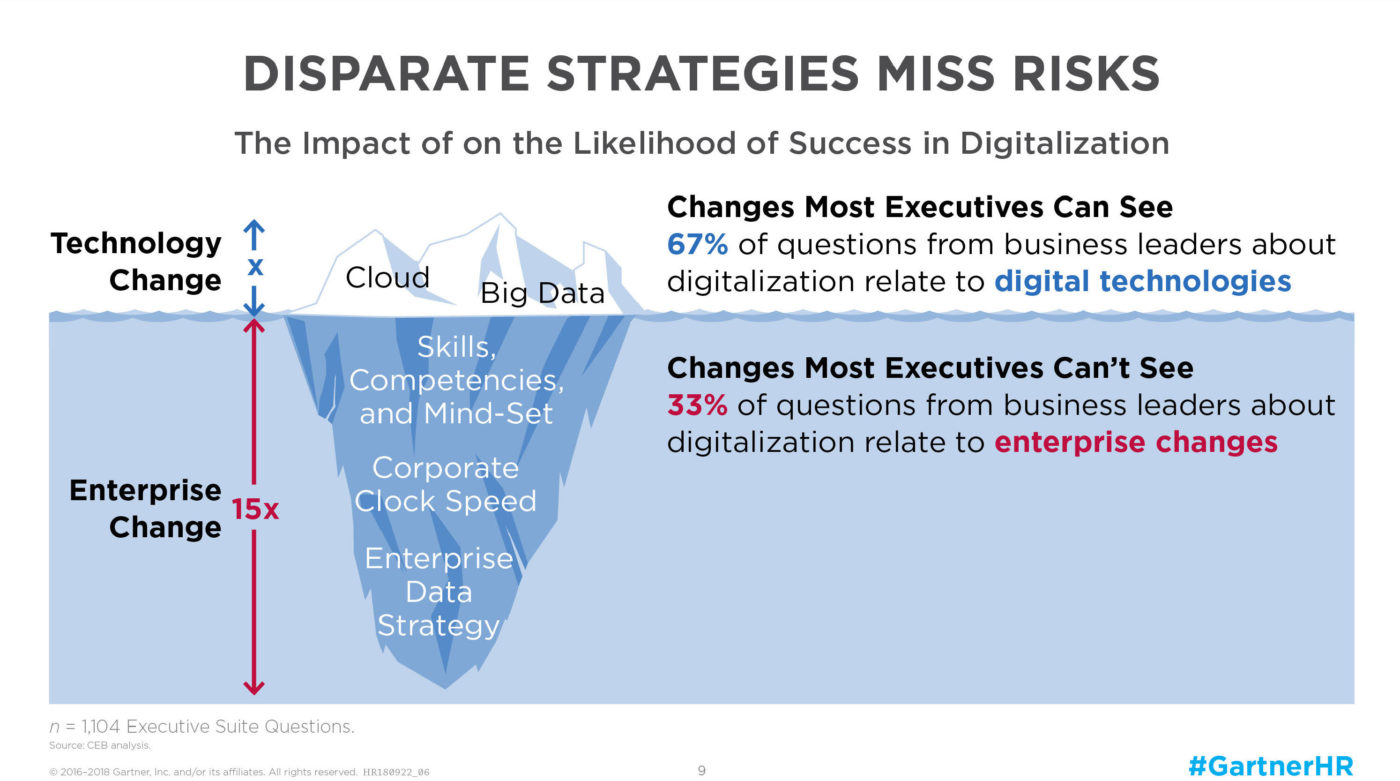Executives and their employees don’t see eye-to-eye when it comes to work technology, says a new report. But is the cause simpler than it seems?
Ninety per cent of C-suite executives believe their companies pay attention to people’s needs when introducing new technology but only 53 per cent of their staff agree, says a new PwC report. The findings come from a survey of 12,000 people from all over the world (not including Australia) and tried to capture multiple generations, roles and industries.
When it comes to workplace tech, it’s not just new technology where employees and leaders don’t line up. Ninety-two per cent of C-suite execs say they’re satisfied with the technology experience their company currently provides but only 68 percent of staff agree.
The report suggests this has to do with a lack of understanding on leadership’s part about the people that work for them. It says that more choice in their technology (from selecting which devices they use, to being able to choose voice over text) and more input in the initial selection of technology are their primary desires.
But perhaps the statistics can be partially explained by the sunk cost fallacy. If you’ve never heard of the concept, it’s essentially about human loss aversion. We’re loathe to part with what we own. In vain we will “sink” more value into it, rather than ditching it for something new. A commonly cited example of the behaviour is going to a concert you’ve bought tickets to, even if it’s the last thing you actually feel like doing. Your fear of wasting the value you’ve spent outweighs what would make you happier.
Referring to the report’s findings on current workplace technology, leaders could be experiencing the sunk cost fallacy. They have invested considerable resources into their platform, and are both financially and emotionally wedded to the current situation, so of course they will tell a survey they’re happy.
A disconnect
What the sunk cost fallacy doesn’t explain is why, when it comes to new technology, executives feel they’re paying attention to their people’s needs when almost half their staff disagree. Research from Gartner, presented by VP, team manager Clare Moncrieff at the ReimagineHR conference earlier this year, possibly provides an answer.
Gartner found that only 27 per cent of companies have a single strategy for digitalisation, meaning 73 per cent have a more piecemeal approach. The problem with this is that doing things piecemeal increases the amount of factors you might miss (see infographic below).
Gartner also found that 67 per cent of the questions business leaders ask about digitalization relate to digital technologies. In other words, they mostly think about products. This means they are missing everything else involved in a people-first digitalisation strategy.

A lot of the questions executives should be asking can be asked by HR, particularly when it comes to issues around skills, competencies and mindset. This becomes clear when you factor in the PwC finding that only half of staff and 64 per cent of managers are satisfied with the resources they have at their disposal to learn how to use new technology.
HR’s role in digitalisation
It’s always interesting when research firms reach the same conclusion. Both Gartner and PwC recommend that bringing staff along with any technology change is crucial. Gartner has the following ideas to make that happen.
- An overriding question HR should ask is when personalisation should come from people, and when it should come from computers. Would people prefer to ask a machine about their annual leave, but talk to a human when it comes to workplace complaints?
- One issue is a right to privacy. Obviously HR analytics are important but many people fear that if you track them, you will discover some employees can be made redundant. Gartner says that 41 per cent of employees don’t trust their employer to not use their own data against them. So they advise leaders to stop asking for data from staff, and start rewarding them for providing it – possibly even offering to purchase it.
- Similar to the privacy issue are employee concerns that they might “innovate themselves out of a job”. If staff do what you want and help the organisation with technological changes, will they so successfully streamline processes that you find you need fewer staff members?
- The question becomes how do you encourage employees to identify ways to automate their own work. One possibility: in February 2017, British insurance company Aviva asked their workforce of 16,000 “could a robot do your job?” They let employees know that anyone who answered “yes” would be retrained for a different role.
PwC suggest the following:
- Change people’s mindsets around what upskilling means. It shouldn’t be training in the typical coursework sense, but instead focus on lifelong learning.
- Take into account the overall work experience – new technologies will not change what motivates your employees.
- Don’t just use data analytics, a more personal approach is required to find out what people’s jobs are actually like.
Finally, both Gartner and PwC think it’s crucial to expand the number of people who have a say over technology changes. They suggest bringing in staff from all relevant departments, at all levels of seniority, and then seeking out your most firm critics and learning about their objections.
Become an AHRI member to access the latest HR research and publications from Gartner, AHRI and the Asia Pacific Journal of Human Resources.

